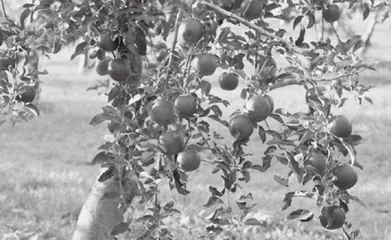The Origin of the Name of Apple“苹果”名字的由来

Long ago, people in China grew a kind of fruit tree called Malus. The fruit was called “nai”. It was small and sour. It first showed up in people’s lives during the Qin and Han Dynasties.
Then in the Wei, Jin, Southern and Northern Dynasties, there was a new fruit called “linqin”. It got its name because birds liked it when it was ripe. It was related to “nai”.
很久以前,中国人种植一种苹果属的果树,其果实被称为 “柰”,又小又酸。柰在秦汉时期首次出现在人们的生活中。
到魏晋南北朝时期,有一种新的水果叫 “林檎”,它因成熟后受鸟儿喜爱而得名。它和 “柰” 有亲缘关系。
Later, in the Western Han Dynasty, apples might have come to China from the Western Regions through the Silk Road. People called them “pinpoguo”. This name came from ancient Sanskrit in Buddhist scriptures. The apples were red like the “pinpo” fruit in the scriptures.
In the late Ming Dynasty, more apples came to China by sea. In some places like Shandong and Liaoning, people called them “pingguo”. But in some southern areas, people still used “linqin” or “huahong”.
The names of apples in China show the changes in fruit tree growing and cultural exchanges between China and other countries.
后来,在西汉时期,苹果可能通过丝绸之路从西域传入中国。人们把它们称为 “频婆果”,这个名字源于佛经里的古梵语,意为:苹果像经文中的 “频婆果”一样红。
到明朝后期,更多的苹果通过海路来到中国。在山东、辽宁等地,人们把它们称为 “苹果”。但在一些南方地区,人们仍然称它们为 “林檎” 或 “花红”。
在中国,苹果的名字体现了果树种植的变化以及中国与其他国家之间的文化交流。
Word Bank
sour /'saʊə(r)/ adj. 酸的;有酸味的
ripe /raɪp/ adj. 成熟的
ancient /'eɪnʃənt/ adj. 古老的
exchange /ɪks'tʃeɪndʒ/ n. 交流